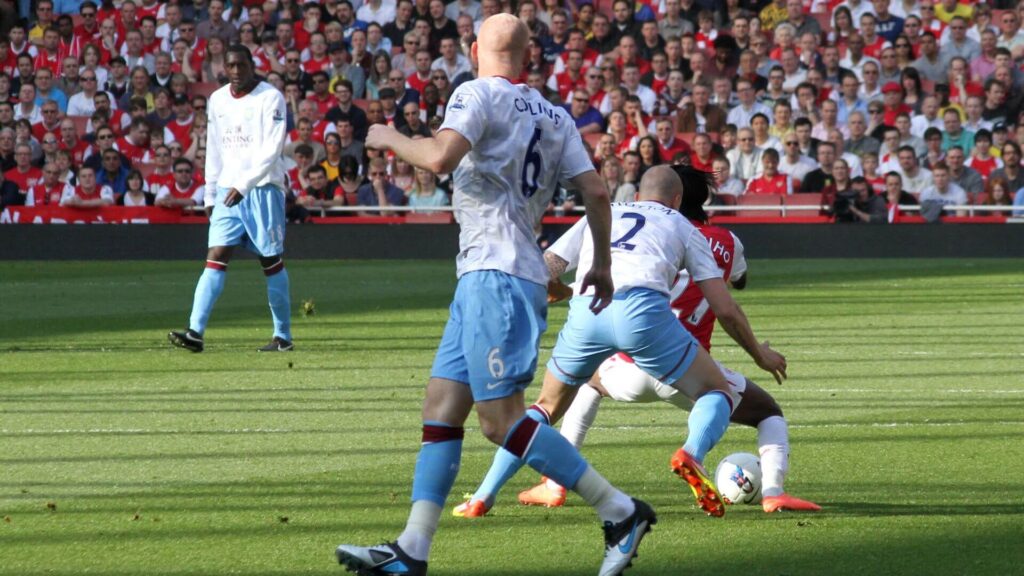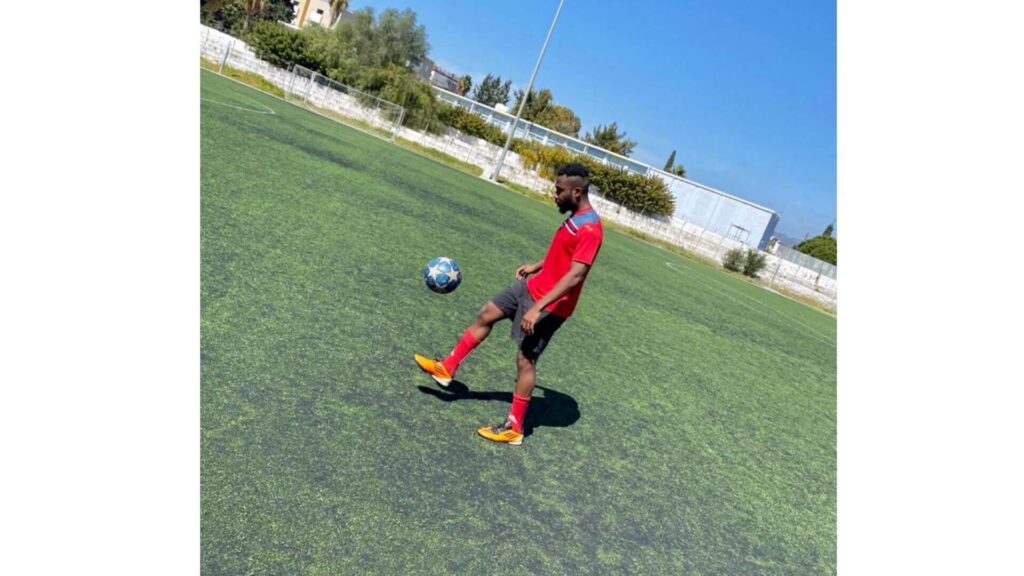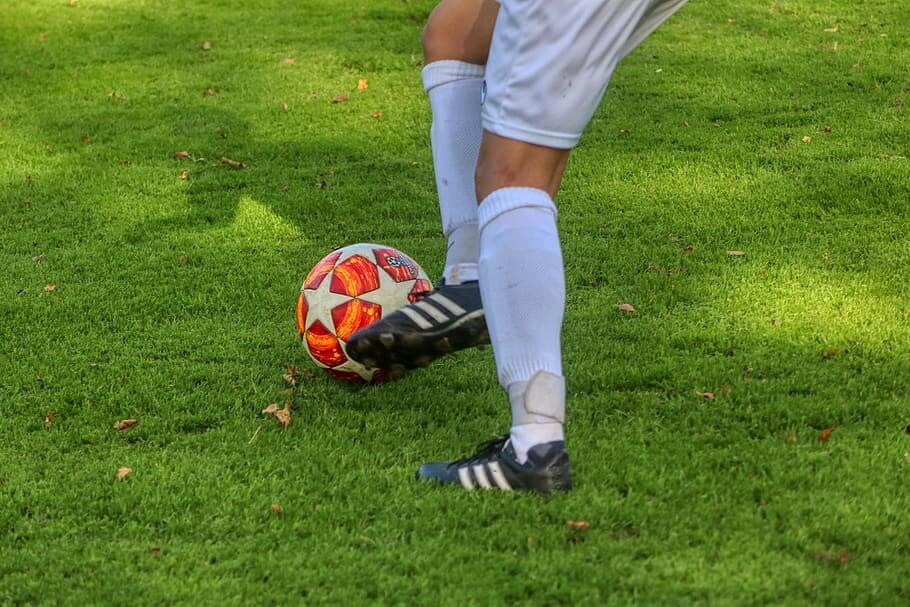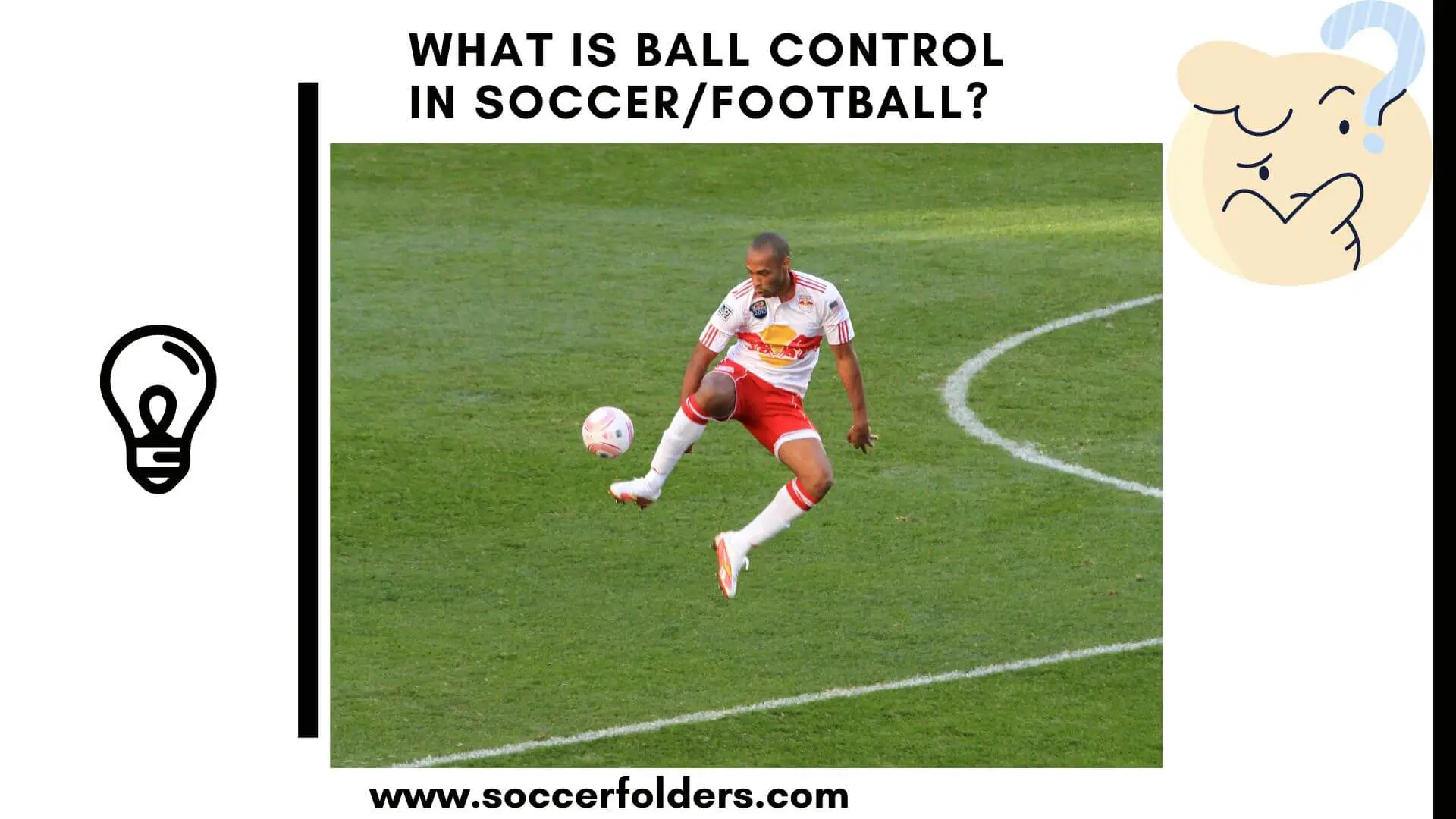Ball control is one of the most underthought techniques in soccer/football. It’s one of the most, if not the most important technique to master.
But, what is ball control in soccer, really? Plus, how do you improve it?
In this post, we will delve deeper into the intricacies of ball control, explore common techniques, and provide valuable tips on how to improve this critical skill.
Get ready to enhance your ball control abilities and take your soccer game to new heights.
Quick Navigation
- What is Ball Control in Football/Soccer?
-
Types of Ball Control in Football/Soccer
- Why is ball control important in Football/Soccer?
- Benefits of good Ball Control
- Techniques for controlling the ball in different situations
- Mental aspects of ball control
- Analyzing and learning from professional players
- Ball Control Mistakes Players Make
- How to Improve Ball Control in Football/Soccer?
- Final Thoughts
What is Ball Control in Football/Soccer?
Ball control in soccer/football refers to the skill of receiving, manipulating, and maintaining possession of the ball using various body parts such as feet, thighs, chest, and head. It involves techniques like trapping, dribbling, shielding, and aerial control, enabling players to execute precise passes, evade defenders, and create scoring opportunities.
There are different types of ball control you should know.
Types of Ball Control in Football/Soccer
In soccer/football, there are various types of ball control techniques that players can employ depending on the situation. Each type of ball control serves a specific purpose and requires different skills.
Let’s explore some of the common types of ball control in soccer.
1. Trapping:
Trapping is a fundamental ball control technique used to receive a pass and bring the ball under control instantly.
Players use various parts of their body, such as their feet, thighs, or chest, to cushion the ball’s impact and bring it to a complete stop.
Trapping allows players to maintain possession and provides them with time to assess the situation and make the next move.
2. Dribbling:
Dribbling involves controlling the ball while moving with it. This technique requires players to use their feet skillfully to manipulate the ball and manoeuvre past opponents.
Effective dribbling involves close ball control, quick changes of direction, and utilizing various parts of the foot to keep the ball within reach.
Dribbling is an essential skill for attacking players, as it enables them to penetrate the defense, create scoring opportunities, and maintain possession in tight spaces.
==>> You can also read the article about the purpose of dribbling in soccer here.
3. Shielding:
Shielding the ball is a technique used to protect the ball from opponents and maintain possession.

Players position their bodies between the ball and the opponent, using their strength and balance to prevent the defender from gaining access to the ball.
Shielding involves using the body to shield the ball while using subtle movements and changes in direction to maintain control. This technique is particularly useful in crowded areas or when players need to buy time for their teammates to provide support.
4. Flicks and Tricks:
Flicks and tricks involve using creative and unexpected movements to control the ball and deceive opponents.
These techniques often require a high level of skill and coordination.
Players may use parts of their body, such as heels, outside of the foot, or even their head, to flick the ball and change its trajectory.
Flicks and tricks can be employed to beat defenders, create space, or surprise opponents with unexpected moves.
5. Aerial Control:
Aerial control refers to controlling the ball while it is in the air.
Players must judge the flight of the ball accurately and time their contact with it to maintain possession.
Different techniques, such as heading, chest control, or volleying, can be used to control the ball in the air.
Aerial control is crucial for winning aerial duels, receiving long passes, or redirecting the ball to teammates.
6. Juggling:

Juggling involves keeping the ball in the air using various parts of the body, such as the feet, thighs, chest, or head, without letting it touch the ground.
Juggling helps improve touch, coordination, and control over the ball. It is often used as a warm-up exercise before training sessions or games.
Why is ball control important in Football/Soccer?
Ball control plays a vital role in soccer. It is a fundamental skill that every player needs to master.
When players have good ball control, they can receive passes more accurately, maintain possession, and make precise passes to their teammates.
Moreover, excellent ball control enables players to navigate through tight spaces, evade defenders, and create scoring opportunities. It forms the foundation of many other soccer skills and allows players to showcase their technique and creativity on the field.
Benefits of good Ball Control
Having good ball control brings numerous benefits to a soccer player’s game.
Firstly, it enhances their overall gameplay by providing them with better control over the ball’s movement and direction. With precise ball control, players can execute dribbles, feints, and quick changes of direction more effectively, leaving opponents bewildered.
Secondly, good ball control increases a player’s passing accuracy, enabling them to distribute the ball with precision to their teammates. This contributes to better team coordination and the creation of scoring chances.
Lastly, excellent ball control instils confidence in players, allowing them to maintain composure under pressure and make sound decisions on the field.
Techniques for controlling the ball in different situations
Controlling the ball in various situations requires different techniques.
When receiving a high pass, you can cushion the ball using your chest or thigh to bring it under control smoothly.
For ground passes, using the inside or outside of the foot allows you to trap the ball and maintain possession.

When the ball is in the air, using the head can be effective for directing it towards teammates or creating scoring opportunities.
Additionally, you can use your feet, especially the sole, laces, or outside of the foot, to manipulate the ball’s movement and keep it close to your body in tight spaces.
If you master these techniques, you can adapt to different game scenarios and maintain control over the ball.
Mental aspects of ball control
The mental aspects of ball control are equally important as the physical techniques.
Concentration is crucial in anticipating the ball’s trajectory and making quick decisions on how to control it effectively.
Spatial awareness allows players to position themselves optimally to receive the ball and be aware of the surrounding players.
Anticipation helps players predict the ball’s movement, enabling them to react swiftly and gain an advantage over opponents.
Additionally, maintaining a calm and focused mindset is essential to execute ball control techniques accurately, especially in high-pressure situations. Developing these mental aspects enhances overall ball control performance on the field.
Analyzing and learning from professional players
Analyzing and learning from professional players can significantly improve one’s ball control skills.
By watching matches and studying the techniques used by top players, aspiring soccer players can gain valuable insights.
Observing how professionals control the ball in different situations, evade defenders, and execute precise passes provides a blueprint for improving one’s own game.
Paying attention to their body positioning, touches on the ball, and decision-making can help you understand the nuances of effective ball control.
Ball Control Mistakes Players Make
Controlling the ball in soccer requires precision and technique, but players often make common mistakes that hinder their ball control abilities. Let’s explore these mistakes:
- Not positioning your body correctly: It’s crucial to align your body with the ball’s trajectory. Look at the ball and ensure you are in the right position to control it effectively.
- Avoid unnecessary complexity: Sometimes, players try to perform fancy tricks instead of choosing simpler options. For instance, if the ball is in the air, using your chest to control it is easier than attempting complicated manoeuvres.
- Ineffective first touch: Even if your first touch seems good, it might not be the most appropriate one. Consider the direction you want to take the ball to utilize available space. Making the right decision during the first touch is vital.
- Underutilizing body parts: Many players overlook using different parts of their body that are allowed in the game. Each situation calls for using the body part that would be most effective in controlling the ball.
- Taking excessive touches: Taking too many touches to control the ball can lead to losing possession. Speed is important, especially when the ball is in the air. For example, if you receive an aerial pass, bringing it down to your chest and then swiftly to your feet offers more options than taking unnecessary touches. Remember, time is valuable in soccer/football.
It’s worth noting that skilled players like Toni Kroos and Modric anticipate their moves even before touching the ball. That’s why they are top-class players.
How to Improve Ball Control in Football/Soccer?
Improving ball control in soccer requires consistent practice and dedication. Here are some effective tips to enhance your ball control skills:
- Juggling: Start with basic juggling exercises to improve your touch and coordination. Begin by juggling the ball with your feet and gradually incorporate other body parts like thighs, chest, and head. Aim for longer consecutive juggles to challenge yourself.
- Wall Passes: Utilize a wall to practice passing and receiving the ball. Pass the ball against the wall using different techniques such as inside foot, outside foot, or laces, and control it upon its return. Focus on accuracy and controlling the ball with each touch.
- Cone Dribbling: Set up a course with cones and practice dribbling through them. Use both feet to navigate around the cones while maintaining close control of the ball. Vary the speed and direction to improve your agility and control in different scenarios.
- One-on-One Drills: Engage in one-on-one drills with a teammate or coach. This allows you to simulate game-like situations and practice ball control under pressure. Focus on shielding the ball, quick changes of direction, and maintaining possession.
- Small-Sided Games: Participate in small-sided games, such as 3v3, 4v4, or indoor soccer which provide ample opportunities for ball control in tight spaces. These games enhance your ability to make quick decisions, adapt to different game situations, and improve overall ball control.
- Technical Training: Engage in technical training sessions that focus specifically on ball control exercises and drills. Work with coaches or trainers who can provide guidance and expertise to help you refine your technique.
- Watch Professionals: Study professional players known for their exceptional ball control, such as Lionel Messi or Cristiano Ronaldo. Observe their movements, touches, and decision-making in various game situations. Analyze their techniques and incorporate them into your training.
Remember, consistent and focused practice is key to improving ball control. Dedicate regular time to these exercises, challenge yourself, and remain patient. With perseverance and determination, you will witness significant progress in your ball control skills.
Final Thoughts
As you saw from this article, ball control is one of the most critical soccer skills.
Now you have a better idea of what it is and how you can improve your control. It’s all about practising.
Do you have any questions regarding the topic? How do you like to control the ball? Which mistakes do you usually make when controlling a ball?
Let us know in the comment section below.
You can also read everything there is to know about soccer skills here.


